In the modern quest for a balanced and health-conscious lifestyle, our choices about what we put into our bodies have never been more crucial. Among the daily indulgences that many of us rely on to jumpstart our mornings or find solace during the day, tea and coffee reign supreme. These beloved beverages offer a comforting ritual and present us with a spectrum of flavors and aromas that can awaken our senses. Yet, beyond the sensory pleasure they provide, lies a more intricate consideration – the acidity of tea vs coffee.
Jump to:
- Intro
- Acidic vs Alkaline and How it Affects Health
- Acidity of Tea
- Varieties of Tea and Their Acidity Levels
- True Teas and Acidity
- Herbal Infusions and Acidity
- Tannins and Acidity
- Tea Acidity and Well-Being
- Least Acidic Teas
- Acidity of Coffee
- Coffee Beans and Acidity
- Brewing Methods and Acidity
- Roast Levels and Acidity
- Coffee and Sensitivities
- Organic and Low-Acid Coffee Options
- Exploring Coffee Further
- Acidity Table Comparing Teas and Coffee Ph Levels
- How Tea's Acidity Compares to Coffee
- Tea vs. Coffee: The Acidity Story
- Strong Tang in Coffee
- Gentle Tang in Tea
- Choosing for Taste and Health
- Balancing the Blend
- FAQ
- Comments
Intro
As a holistic nutrition specialist, my journey delving into the intricacies of these two popular elixirs has unveiled a world of nuances that extend far beyond the taste buds.
Join me in this insightful exploration as we unravel the physiological impact of tea and coffee on our bodies and discover how each can fit harmoniously into our pursuit of overall well-being.
Both coffee and tea can also provide nutritional value and health benefits. But as we know, there are various types of coffee and tea and various qualities depending on how and where it was grown and harvested to the process from nature to table.
Certain factors come into play that can make all the difference in the acidity of coffee and different types of tea and how they may affect our health.
Acidic drinks and foods vary in how they affect our overall health and wellness. For instance, lemon juice is very acidic going in, but once ingested, it has an alkalinizing effect.
Whether you are looking to improve the pH level of your food and drink to promote better oral health, overcome cancer or other chronic and inflammatory illnesses, remedy acid reflux or gastroesophageal reflux disease, or want to learn more about and consume more healthy low-acid foods- you have come to the right place!
This article is intended for informational purposes only. It is not a substitute for the advice of a medical professional.
Acidic vs Alkaline and How it Affects Health
The journey into the realm of tea and coffee's acidity begins with the fundamental concept of acidic and alkaline substances. In the context of beverages, acidity refers to the level of acid content present, often measured by the pH value on the pH scale.
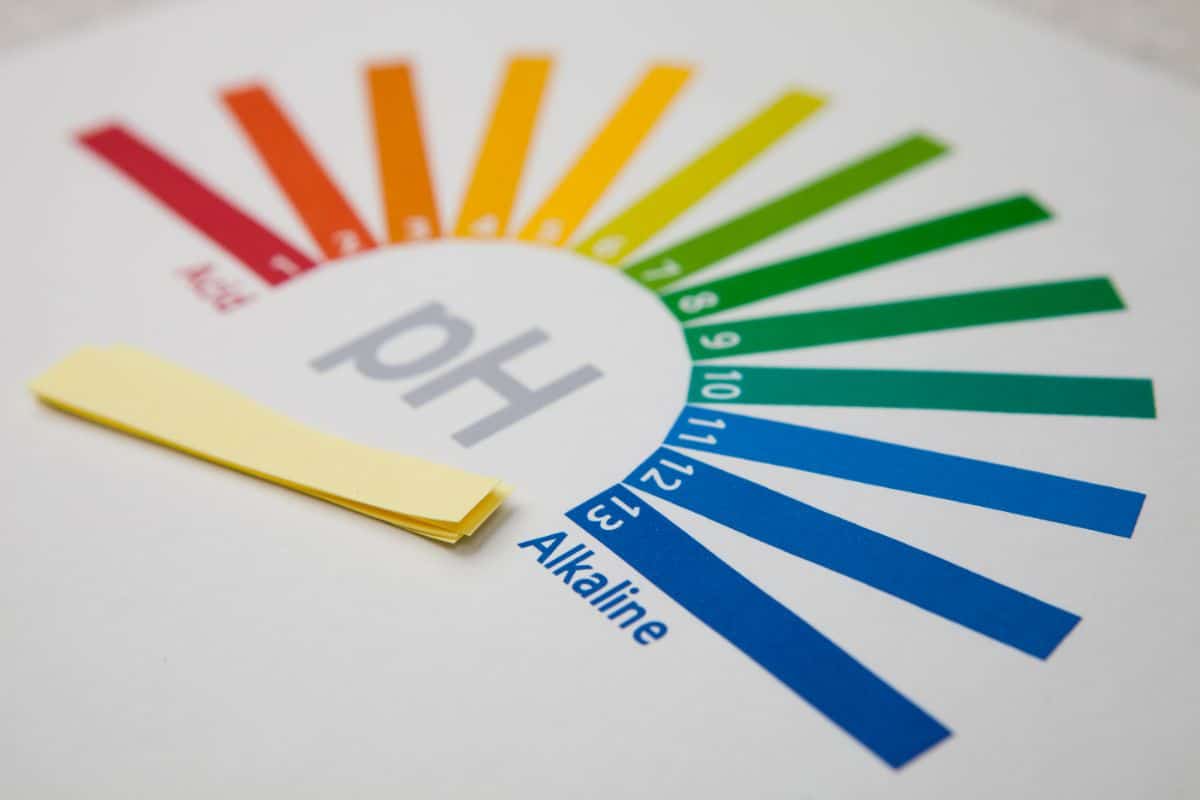
This scale ranges from 0 to 14, with 0 being the most acidic, 7 considered neutral, and values higher than 7 indicating alkaline.
When it comes to our bodies, maintaining a delicate balance between acidity and alkalinity is essential for overall well-being. Our digestive system, particularly the lower esophageal sphincter (LES), plays a pivotal role in this balance.
This ring-like muscle serves as a gateway between the esophagus and the stomach, allowing food and beverages to pass into the stomach while preventing stomach acid from flowing back into the esophagus.
Acidic beverages, such as certain types of coffee, can impact the functioning of the LES. The lower acidity levels in tea, on the other hand, tend to have less influence on the LES.
This distinction is noteworthy, as frequent consumption of highly acidic beverages may weaken the LES over time, leading to a higher risk of stomach acid flowing back into the esophagus.
This can result in discomfort, and heartburn, and potentially contribute to the erosion of tooth enamel due to prolonged exposure to acidic food, drink, and even stomach acid.
Beyond the immediate concerns of heartburn and tooth enamel erosion, the effects of acidity levels in beverages can extend to broader health problems.
For individuals susceptible to conditions like irritable bowel syndrome (IBS), consuming highly acidic drinks might trigger negative effects, including gastrointestinal distress.
It's important to note that while acidity itself is not inherently harmful – as our stomach acid is naturally acidic to aid in digestion – an excessive intake of highly acidic beverages could potentially exacerbate existing health issues.
As we venture deeper into the intricacies of the acidity of tea vs. coffee, it's crucial to remember that the impact of these beverages on our health is not solely determined by their pH values.
Factors like individual tolerance, overall dietary choices, and lifestyle habits also play a significant role in shaping how our bodies respond to different levels of acidity.
In the following sections, we'll delve into the specific acidity profiles of tea and coffee and explore how they interact with our unique physiological landscapes.
Acidity of Tea
Tea, an age-old elixir celebrated for its calming aroma and diverse flavors, has carved a special place in the hearts of beverage enthusiasts worldwide.
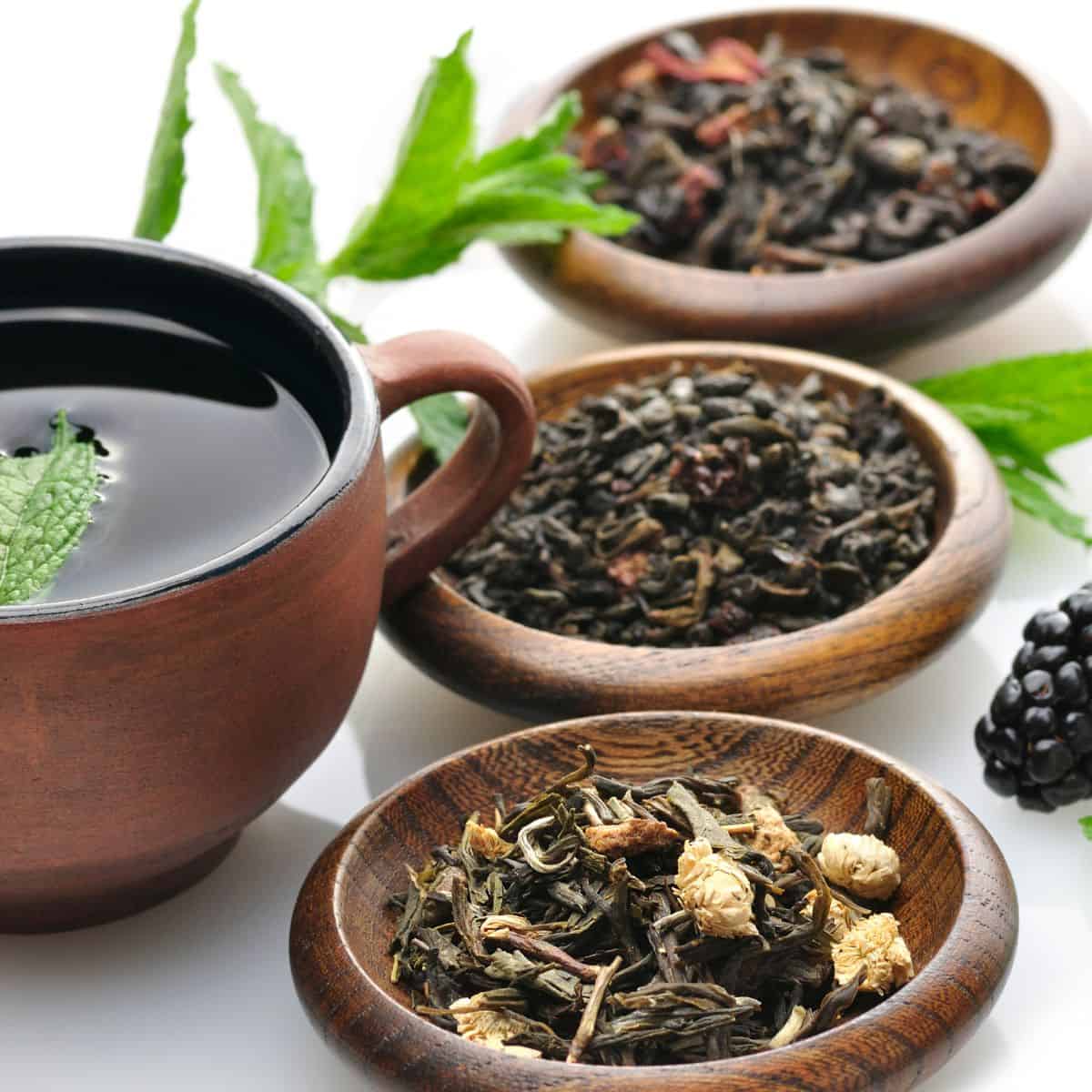
From the rich complexity of black tea to the delicate nuances of herbal infusions, the world of tea offers an array of experiences that span the spectrum of acidity levels, catering to a wide range of preferences and health considerations.
Varieties of Tea and Their Acidity Levels
When we consider the acidity of tea, it's important to note that not all teas are created equal. The acidity levels of tea vary based on factors such as the type of tea leaves, processing methods, and the presence of certain compounds. True teas, which include black tea, green tea, white tea, and oolong tea, exhibit a degree of acidity that is influenced by their origin and processing.
True Teas and Acidity
Among the true teas, black tea is often considered to have a higher acidity compared to its counterparts. This might be attributed to the oxidation process involved in its production. Green tea, like sencha, hojicha, and matcha, on the other hand, generally has a lower acidity level, making it a popular choice among those seeking a milder and less tangy cup of tea.
White tea, recognized for its delicate nature, tends to fall on the lower end of the acidity spectrum, offering a smoother and gentler flavor profile.
Herbal Infusions and Acidity
Tea drinkers often delight in medicinal, herbal, and fruit teas. Herbal teas, which encompass a vast array of flavors and potential health benefits, exhibit varying levels of acidity.
For instance, herbal teas like chamomile tea, ginger tea, mauby bark tea, and mint tea are often considered to have low acidity, making them a better choice for individuals with sensitivities to more acidic beverages.
The good news is that many herbal teas, like rosehip tea, can be enjoyed with a significantly lower risk of causing an upset stomach or other digestive discomfort. Yerba Mate, on the other hand, is considered an herbal tea but happens to be higher in acidity than other herbal teas.
 FGO Organic Chamomile Tea, ...Shop on Amazon
FGO Organic Chamomile Tea, ...Shop on Amazon
Tannins and Acidity
Tannic acid, a naturally occurring compound found in tea leaves, contributes to the overall acidity of tea.
Teas that are rich in tannins, such as black tea and oolong tea, may carry a slightly higher acidity profile. However, it's worth noting that tannins also impart astringency to tea, adding depth and complexity to the overall flavor and potential health benefits.
As we mentioned before, not all acids are bad!
Tea Acidity and Well-Being
Understanding the acidity levels of different types of tea can be particularly beneficial for those with health conditions that are sensitive to acidity, such as acid reflux or irritable bowel syndrome.
Opting for teas that are on the lower end of the acidity spectrum, combined with considerations like consuming tea on a full stomach or with a splash of plant-based milk or raw cow's milk, can help mitigate potential discomfort. (This is one of my favorite remedies if I'me feeling sensitive to acids in tea or coffee!
Least Acidic Teas
For those who find themselves drawn to tea's vibrant world of flavors but prefer lower acidity, exploring the least acidic teas among the true teas could be a delightful journey.
From the gentle allure of white tea to the balanced charm of green tea, these options offer a chance to savor the nuances of tea without overwhelming the palate.
As you embark on your tea-drinking adventures, remember that the acidity of your tea is just one element in a tapestry of factors that contribute to your overall experience.
Embrace the variety, experiment with different brewing methods, and savor each cup of tea as an invitation to explore a world of flavors that resonate with your taste buds and nourish your well-being.
 The Republic Of Tea Emperor...Shop on Amazon
The Republic Of Tea Emperor...Shop on Amazon
 VAHDAM, Organic Green Tea L...Shop on Amazon
VAHDAM, Organic Green Tea L...Shop on Amazon
Acidity of Coffee
When we delve into the world of coffee, we find a diverse spectrum of flavors, aromas, and yes, acidity levels. The acidity of coffee is influenced by various factors, ranging from the type of bean and its origin to the brewing method employed.

Coffee aficionados understand that this beverage is not a one-size-fits-all concoction; it offers a range of acidity profiles that cater to different preferences for taste and caffeine content as well as sensitivities.
Coffee Beans and Acidity
The acidity of coffee is intricately tied to the type of coffee beans used. Different coffee varieties grown in distinct regions yield varying levels of acidity. For instance, beans grown at higher altitudes tend to possess a higher acidity due to the slower ripening process.
These beans are often associated with brighter and more vibrant flavors, making them a favorite among those who appreciate a tangy and lively cup of coffee.
 Low Acid Coffee, Blend of N...Shop on Amazon
Low Acid Coffee, Blend of N...Shop on Amazon
Brewing Methods and Acidity
The brewing method is another critical factor in determining the level of acidity of your cup of coffee. Cold brew coffee, for instance, is known for its lower acidity due to the prolonged steeping process in cold water.

On the other hand, traditional black coffee brewed through methods like drip or French press can exhibit a wide range of acidity levels based on factors such as grind size, water temperature, and extraction time.
Roast Levels and Acidity
The roast level of coffee beans also plays a role in the resulting acidity of the brew.
Dark roast coffee beans, which have been roasted for a longer time, tend to have a lower acidity compared to their lighter roast counterparts.
This is because the extended roasting process breaks down some of the naturally occurring compounds, including chlorogenic acid, responsible for acidity.
However, it's important to note that while darker roasts might have lower acidity, they also tend to have less caffeine and antioxidants compared to light roasts.
For enhanced and more sustained energy levels, consider a bulletproof coffee regimen.
 Lifeboost Coffee Light Roas...Shop on Amazon
Lifeboost Coffee Light Roas...Shop on Amazon
 Lifeboost Coffee Dark Roast...Shop on Amazon
Lifeboost Coffee Dark Roast...Shop on Amazon
Coffee and Sensitivities
Coffee drinkers and enthusiasts span a broad spectrum of preferences. Some coffee lovers enjoy the sharpness of a more acidic coffee, while others seek out low-acid coffee options to avoid potentially upset stomachs.
Individuals with sensitive stomachs or those who find themselves affected by acidic foods might lean towards low-acid coffee varieties or decaffeinated options.
Organic and Low-Acid Coffee Options
For those aiming to reduce the acidity of their coffee consumption, a variety of choices are available in the market.
Organic coffee, which is grown without the use of synthetic pesticides or fertilizers, can offer a smoother and less acidic experience.
Moreover, some brands specialize in producing a type of bean that produces low-acid coffee that caters to individuals looking for a gentler brew on their digestive system.
 Lifeboost Coffee Organic Co...Shop on Amazon
Lifeboost Coffee Organic Co...Shop on Amazon
 Purity Coffee EASE Dark Roa...Shop on Amazon
Purity Coffee EASE Dark Roa...Shop on Amazon
Exploring Coffee Further
As we immerse ourselves in the fascinating realm of coffee acid levels, it becomes clear that the complexity of flavors and sensations this beverage offers is a testament to its rich heritage.
If you're interested in learning more about the acidity of your coffee and how to reduce the acidity of coffee or discover the subtleties of different coffee bean types and brewing methods, be sure to explore our dedicated article on the subject.
Join us as we uncover the nuanced world of coffee acidity and empower ourselves to make informed choices that align with our individual preferences and well-being. Also, Check out our article on the energy drink Celsius and how it compares to coffee.
Acidity Table Comparing Teas and Coffee Ph Levels
Here's a table that provides an approximate range of pH levels for different types of tea and coffee:
| Beverage | pH Range |
|---|---|
| Black Tea | 4.9 - 5.5 |
| Green Tea | 7.2 - 7.5 |
| White Tea | 5.5 - 7.0 |
| Oolong Tea | 6.2 - 6.8 |
| Herbal Teas | 6.0 - 7.5 |
| Coffee (Regular) | 4.8 - 5.5 |
| Coffee (Dark Roast) | 4.7 - 5.3 |
| Decaffeinated Coffee | 5.8 - 6.0 |
| Cold Brew Coffee | 6.5 - 7.0 |
Please note that these pH values are approximate and can vary based on factors such as the specific type of tea leaves or coffee beans used, the brewing method, and other variables. The values listed here are meant to give you a general idea of the relative acidity of each type of beverage.
How Tea's Acidity Compares to Coffee
Let's directly compare the world of tea's acidity compared to coffee's acidity. It's like uncovering the secret behind the flavors and how they can affect our health. Both are cozy drinks, but they have different tangy levels that make them special.
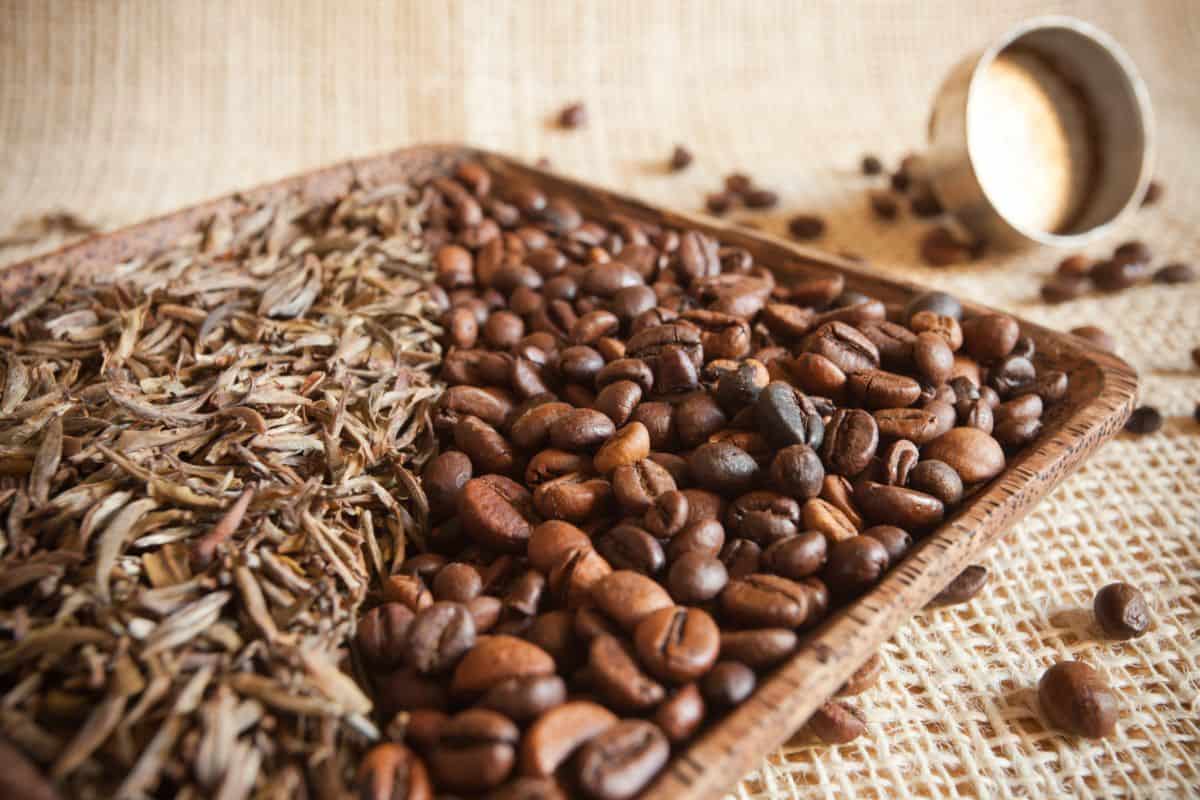
Tea vs. Coffee: The Acidity Story
Think about tea and coffee as flavors on a scale. Tea usually has less tanginess compared to coffee. This is because of where the tea leaves and coffee beans come from, how they're made, and how they're brewed.
Strong Tang in Coffee
Coffee lovers know that coffee has a bold flavor. The kind of roast – dark roasts or light roasts– gives coffee its tangy kick. Something called chlorogenic acid makes coffee tangy. This affects the taste and can also have an impact on your stomach, teeth, and overall health.
Gentle Tang in Tea
Tea, on the other hand, has a more gentle tang. Especially green and white teas have lower tanginess. Things like tannins add a little astringency to tea, making it a smooth experience.
Choosing for Taste and Health
Understanding the difference in acidity helps you pick what suits your taste and health. If you like the kick of a tangy drink, coffee might be your choice. If you prefer a drink that's kinder to your stomach, tea could be better- depending on the source and quality of each.
Balancing the Blend
Remember, depending on your taste and health needs, it's fine to have a bit of both. In fact, doing so will give the broad spectrum of incredible health benefits that each type of tea and organic low-acid coffee can offer.

Both tea and coffee have delicious flavors and antioxidants in them. It's up to you to decide what tastes best and makes you feel good. Listening to your body's needs is key!
Whether you go for coffee's boldness or tea's calming flavors, enjoy every sip – it's a journey of taste and well-being!
FAQ
If you are struggling with acid reflux or GERD, it is common for certain foods to trigger unpleasant symptoms. Tea and coffee can be acidic if not properly prepared. Choosing low-acid coffee beans and organic green or white tea can give you a smoother and less acidic option. Adding cinnamon or organic cream can also help remedy acidity in your favorite morning beverage.
Typically the answer is that coffee is more acidic than tea. Black tea is the most acidic of the tea types while green tea and white tea are the least acidic.
Surprisingly, some acidic foods actually help to calm acid reflux. Apple cider vinegar (with the mother) is a popular reflux remedy. Plain Greek yogurt, ginger, sprouted nuts and seeds, salmon, bananas, and organic oats can all be helpful when struggling with reflux symptoms. Also, consider trying a ¼ teaspoon of baking soda mixed in water for a quick remedy!
On your health and wellness journey, we venture to share the importance of making informed food and drink choices, consuming high-vibrational and nutrient-dense foods, and impressing the importance and value of avoiding a diet high in processed foods.
To learn more about the benefits of coffee and various types of tea, superfoods, herbs, clean eating, natural living, and mindfulness techniques join us by hitting the subscribe button.
Check out our web story here!
Stay tuned for upcoming courses and healing workshops to boost your overall wellness in mind body and soul! Join us on social media as well as we band together to take charge of our health and learn how to heal and thrive naturally!
Do you prefer coffee or tea? Let us know in the comments below!
Happy sipping,
Natalie

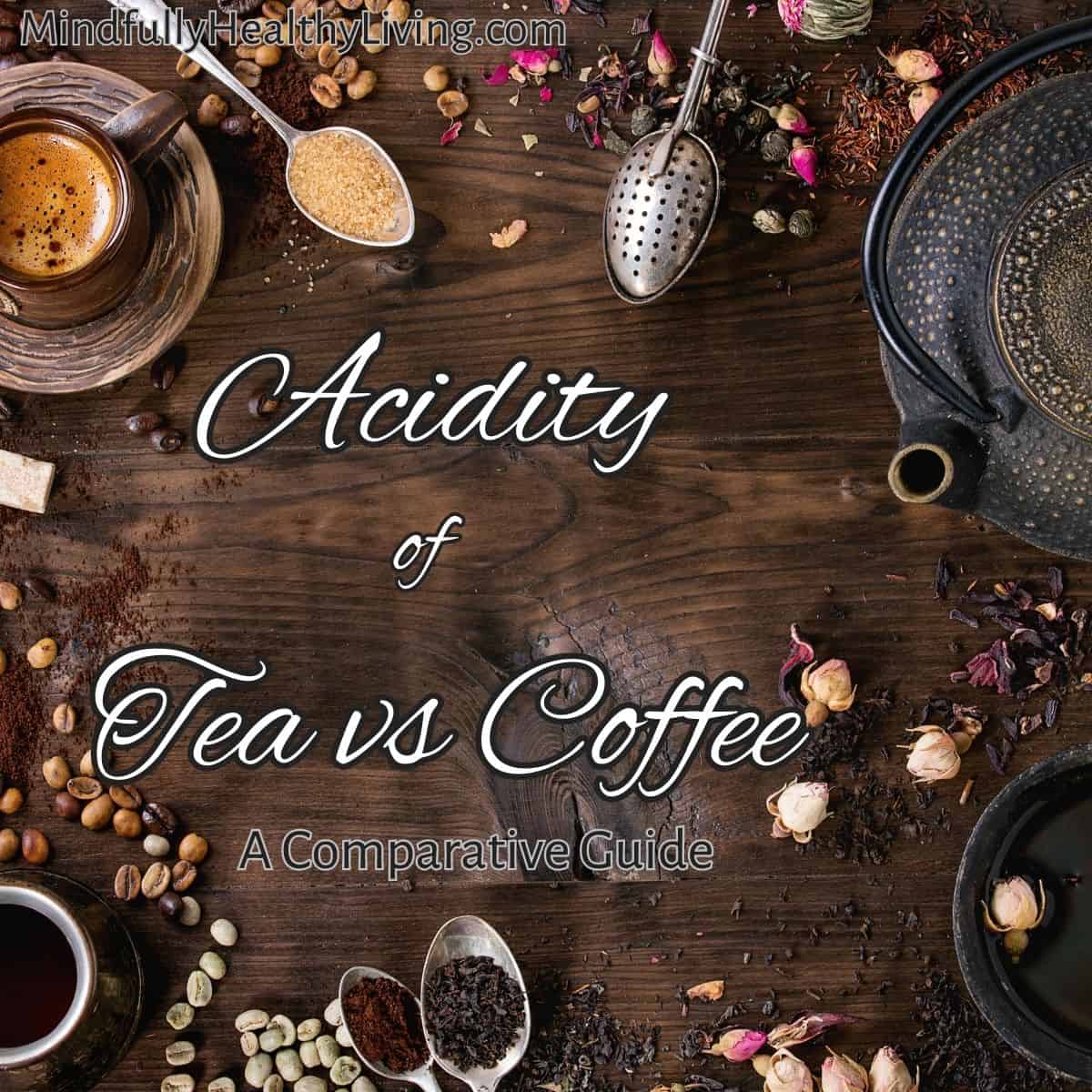
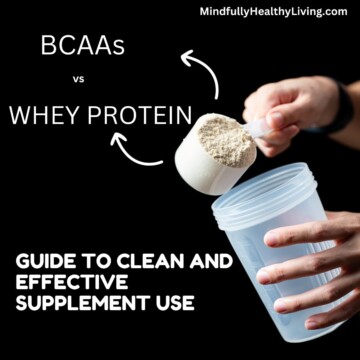
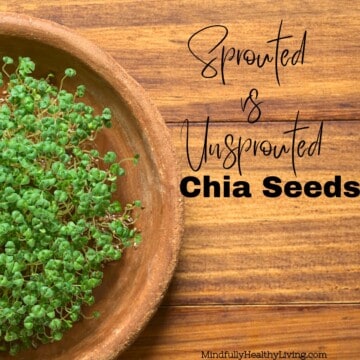
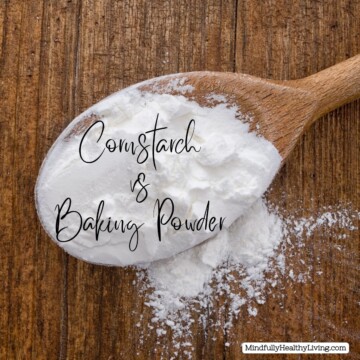
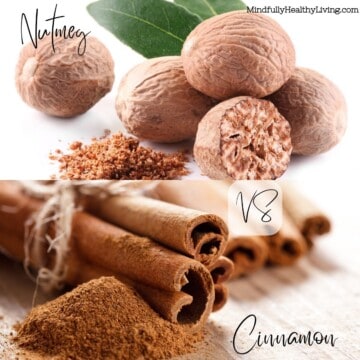
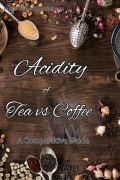




Andréa says
What a great inside in the world of acidity of coffee and tea. With good explanations and tips. Thank you!
Natalie Perry says
You are welcome 🙂
Padma says
As someone who loves both tea and coffee, this was a good read. Learnt a lot about my two favorite beverages. Thanks!
Natalie Perry says
You are welcome!
Megane says
You are talking my language. So much good information and food for thought in this article.
Natalie Perry says
Great minds think alike! Thank you
Jacqueline Debono says
I learnt so much from this article. I love coffee but suffer from IBS so am definitely going to look at drinking more green tea and less acidic coffee!
Natalie Perry says
We understand! Check out our article on choosing matcha green tea. Those are so delicious!
Jerika says
Thank you for this comparative guide between coffee and tea.:) I learned more about coffee and tea and how to use and consume it properly.
Natalie Perry says
thank you for commenting!